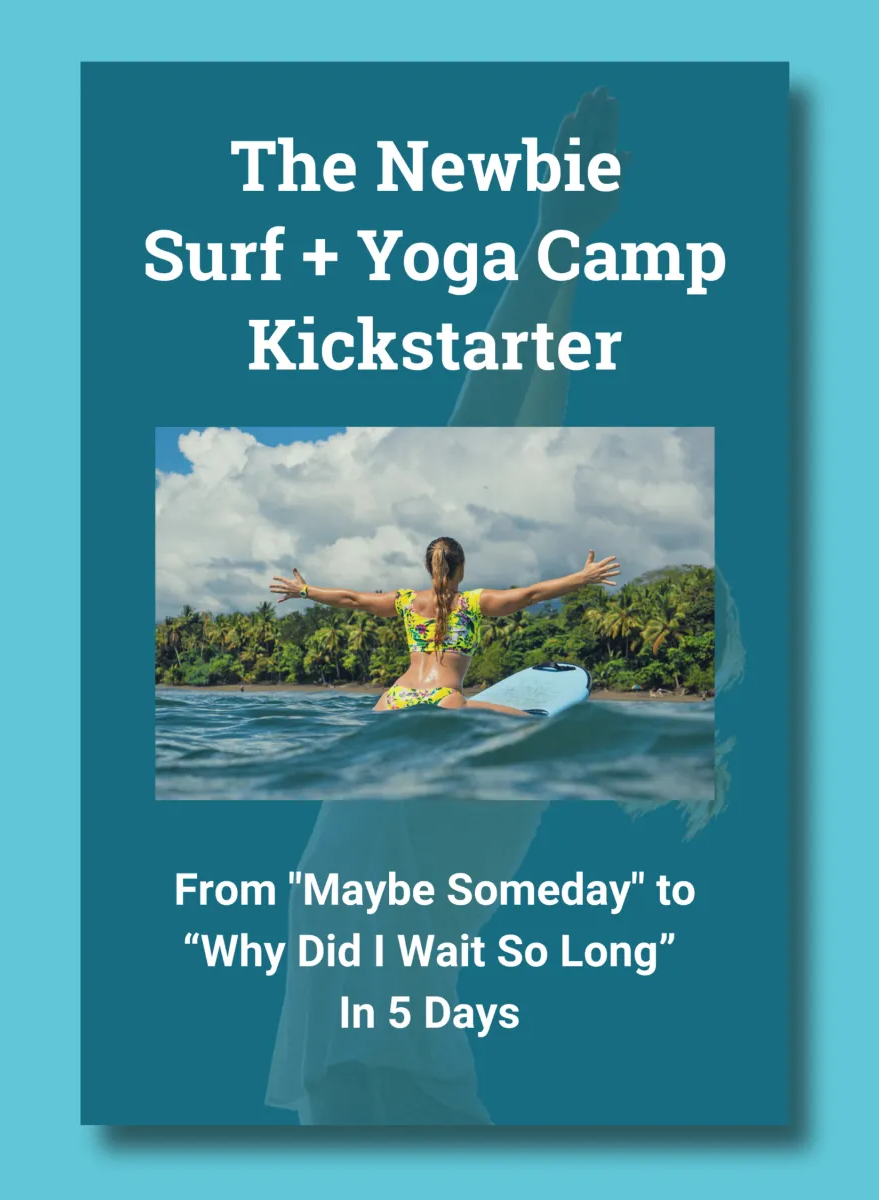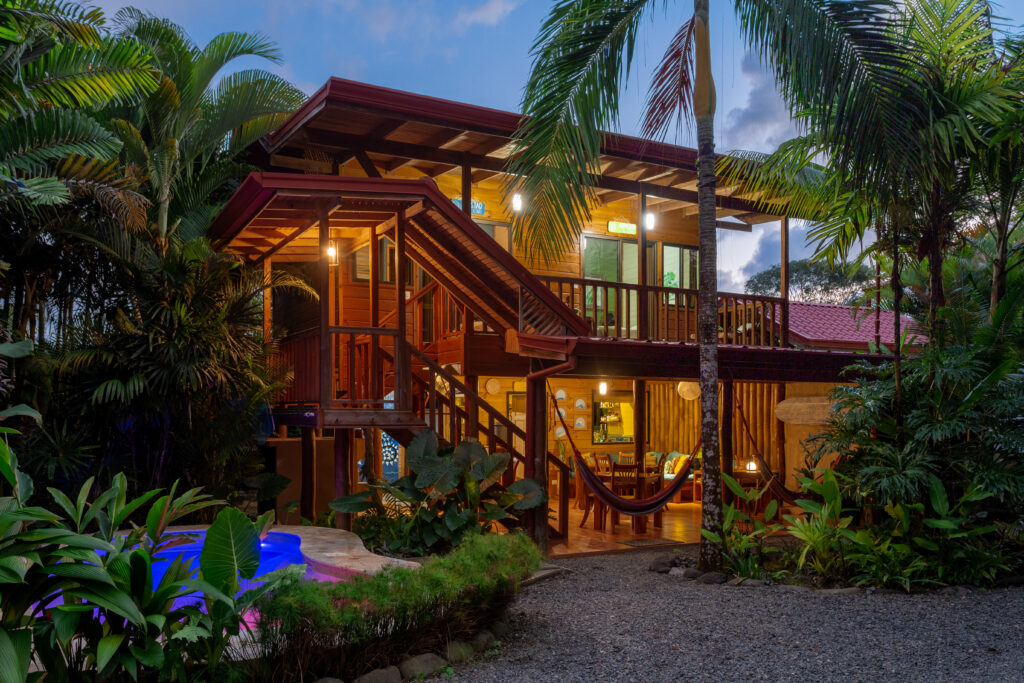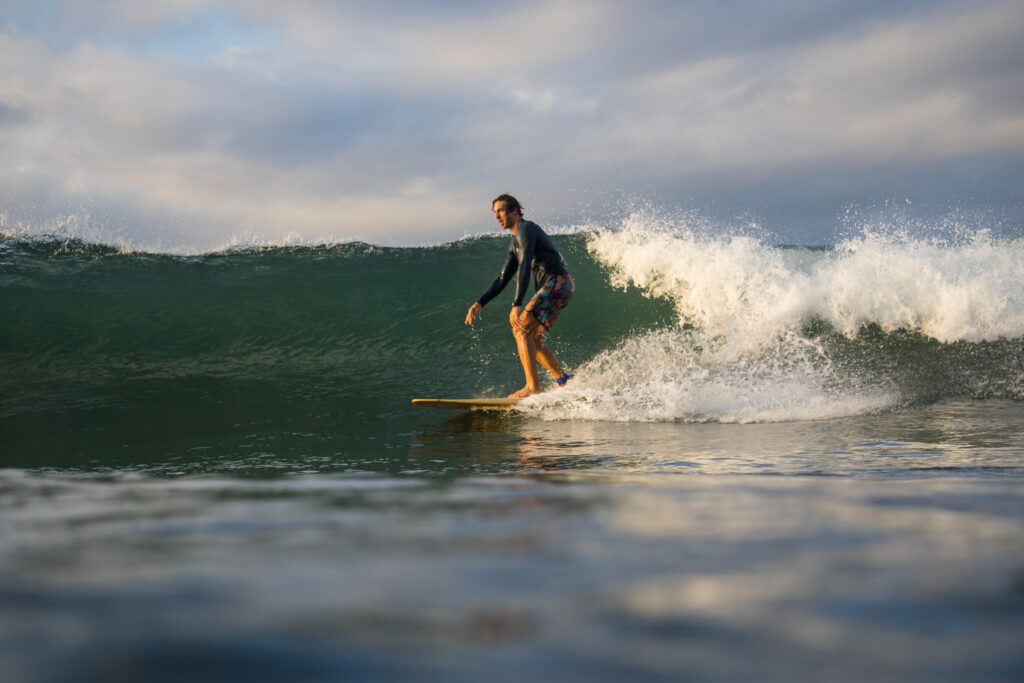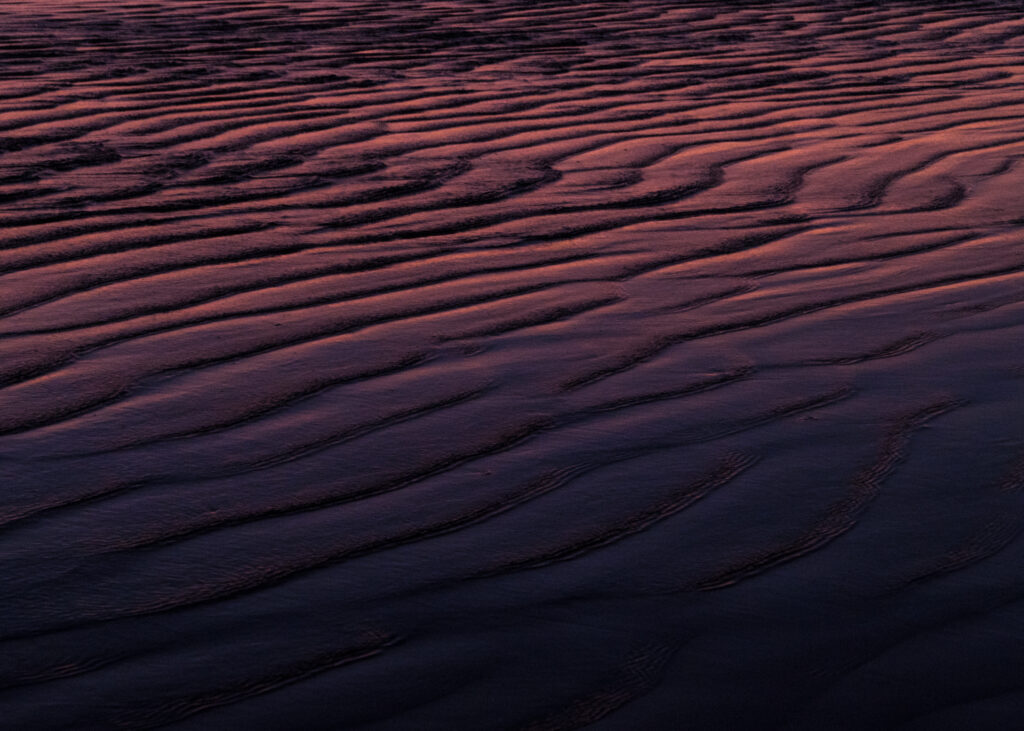Catching waves is one of the most important skills in surfing and should not be overlooked. It is common for beginner surfers to only focus on their physical skills like the popup, stance, and paddling technique.
But if you really want to improve your surfing, then you need to know how to catch waves — as many as possible, in fact.
In order to catch more waves, you first need to understand how waves work. Then you need to learn how to read them and position yourself to catch them in the ocean.
The goal of this blog post is to provide you with all the necessary information to help you catch more waves.
Here are the topics we will cover:
- What are waves and how are they generated?
- Stages of the wave
- How do I read the wave?
- Identifying the peak: rights vs. lefts
- How do I get better at catching waves?

What are waves and how are they generated?
My favorite description of ocean waves comes from William Finnegan, best-selling author of the Pulitzer Prize winning surf book Barbarian Days: A Surfing Life:
“A storm out at sea churns the surface, creating chop—smaller and then larger disorganized wavelets, which amalgamate, with enough wind, into heavy seas. What we are waiting for on distant coasts is the energy that escapes from the storm, radiating outward into calmer waters in the form of wave trains—groups of waves, increasingly organized that travel together. Each wave is a column of orbiting energy, most of it below the surface. As it travels, it becomes more organized—the distance between each wave in a train, known as the interval, increases. As waves from a swell approach a shoreline, their lower ends begin to feel the bottom. The visible part of the wave grows, its orbiting energy pushed higher above the surface. The resistance offered by the sea bottom increases as the water gets shallower, slowing the progress of the lowest part of the wave. The wave above the surface steepens. Finally, it becomes unstable and prepares to topple forward—to break.”
William Finnegan, Barbarian Days
Simply put, waves are the memory of wind from distant storms that occur in the middle of the ocean. These large storms create swells that often travel thousands of miles through the deep ocean before reaching our shores and turning into surfable waves.
Our goal as surfers is to harness the energy from these waves and do something unique and beautiful with them.

Stages of the wave
There are 4 primary stages of a breaking wave. It is very important to know and identify the different stages of a wave as it moves through the ocean toward shore.
- Stage 1: The oncoming wave is just a bump moving through the water
- Stage 2: The bump grows taller and steeper, creating a slope or “face”
- Stage 3: The top part of the wave (called the lip) begins to topple forward and break
- Stage 4: The wave has broken and turned to white water
If you try to catch a wave too early (stage 1) you will not generate enough momentum to stand to your feet. If you catch the wave too late (stage 3) your board will go straight down the face of the wave as you nosedive.
Stage 2 is where you want to meet the wave. Stage 2 is when the wave grows steep enough for the surfer to paddle “downhill” and catch the wave without “perling” or nosediving.

How do I read the wave?
Most beginner surfers and surf instructors focus on one aspect of surfing only: the popup. But if you can’t read the wave and set yourself up for success, then it doesn’t really matter how good your popup is.
The most important aspect of reading a wave is identifying where the peak is. The peak is the tallest, steepest section of the wave. The peak is where the wave will start to break first.
Keep in mind that the tide plays a major role in how “peaky” the wave will be. For example, waves move much faster through water at low tide versus high tide. This is because the waves are not experiencing as much drag on the seafloor compared to high tide.
The peak of a wave at low tide will look more like a wall. But the peak of a wave at mid tide will look more like a head and shoulders or a pyramid.
Remember, we want to catch the wave while it is breaking, with just enough of a slope to allow us to stand up to our feet.
As the surfer, you should be looking for a stage 2 wave that is steep enough for you to paddle into, but not so steep that you nosedive. We call this section of the wave Spot X.
The key to identifying Spot X is to have good spatial awareness. When you are paddling for a wave, you must continually look back over your shoulder to see what the wave is doing behind you.
Is it moving quickly through the water — getting taller and steeper? If so, you should probably slow down your paddle speed so you don’t paddle past Spot X. Once you paddle past Spot X, the wave will either break on top of you or behind you.
When you feel the wave pick you up at stage 2, continue paddling until the nose of your surfboard starts to dip down. As your board starts to slide down the slope of the wave, it is time to lift up your chest and pop to your feet.

Identifying the peak: right vs. left-breaking waves
Imagine that you are sitting on your surfboard out in the lineup waiting for a wave to arrive. It is very rare that the peak of the wave will pop up directly in front of you.
Most of the time, the wave will pop up either to your left or right. If the peak is off to your right, spin your board to the right to start paddling for it at an angle.
This allows you to continue watching the wave as you paddle. If you were to spin the opposite direction (to the left), you would be turning your back to the peak and losing sight of the wave.
If the peak of the wave is over your left shoulder as you paddle toward the beach (pictured above), then you will pop up and surf the wave to the right.
Always surf across the face of the wave away from where it is breaking. Your goal is to stay on the green (breaking) face of the wave for as long as possible. Never surf toward the peak because that is where the white water will be.

How do I get better at catching waves?
Repetition is key. The more waves you watch the better you will be at reading them.
Go to the beach and mind surf each wave that you see breaking. Visualize yourself out in the ocean and practice identifying the peak of each wave.
Each time you watch a wave break, your brain is processing information about that wave and how best you should surf it. You can also study other surfers in person or by watching surf videos on Youtube.
Bodysurfing is a great way to catch more waves.
If you are wanting to figure out a new wave that you have never surfed before, or you are simply trying to get more in tune with your home break, then bodysurfing is an awesome way to do just that.
The power of observation that is spurred on by bodysurfing makes it easier to see how and where certain waves are breaking.

As a bodysurfer, you really have to figure out where the steepest part of the wave (the peak) is located because you don’t have a board underneath you to help you catch the wave. You are essentially using your own body as the surfboard.
Because you have to be more precise about the timing and position of your takeoff, it is helpful to sit on the inside (where waves have already broken) and observe where other surfers are taking off on green (unbroken) waves.
Bodysurfing allows you to do this, as it is much easier to maneuver your body and get out of the oncoming surfer’s way when you are not encumbered by a surfboard. It is also easier to duck dive (swim under) waves without a surfboard.
Once the surfer is past you, you can swim directly to the spot where he or she just took off in order to catch the next wave.

Come and learn how to catch a wave with us here in Costa Rica!
Bodhi Surf + Yoga offers many options for learning how to surf — one or two week surf/bodysurf and yoga camps. We have ones designed specifically for adults, and others for families with children.
We have been operational since 2010, and are experts at explaining the intricacies of surfing and coaching our students to help them meet their own surfing goals.
Our methodology is based around teaching our surf students the necessary skills to read waves, catch them, and stand to their feet on their surfboards.
Even further, as surfing is much more than just standing to your feet, so our lessons also include explanations and demonstrations of the following:
- Choosing, managing, and caring for surf equipment
- Paddling proficiently
- Riding waves in the prone position
- Standing up and falling successfully and safely
- Riding waves from a standing position
- Information about waves and surf breaks
- Surf etiquette, history, and culture
- Ocean stewardship
Check out our Costa Rican surf and yoga camp options and our availability, and start planning! Don’t hesitate to reach out if you have any additional questions.

For First-Time Surfers
You Don't Need Experience. You Don't Need Gear. You Just Need This.
Our free 5-day email course that reveals the 5 myths keeping beginners at "I'm not ready" instead of catching their first wave and finding inner peace-and how to overcome them fast.
Change the heading on the Separator tab ->
Search
The Newbie Surf + Yoga Camp Kickstarter
Bust the 5 biggest myths about going to a surf and yoga camp so you can stop procrastinating and start catching waves - with our FREE 5-day email course.
Change the heading on the Separator tab ->
Most Read Blogs
What is the Meaning of Anjali Mudra?
May 27, 2020
Fitness for Surfers: Workouts, Exercises & Training
February 10, 2022
The Best Places to Eat in Uvita, Costa Rica
May 19, 2022
How to Get From SJO to Costa Ballena, Costa Rica
May 31, 2018
Change the heading on the Separator tab ->
Categories
Categories
- Bodysurfing (5)
- Food (8)
- Responsible Business (6)
- Surfing (66)
- Travel (65)
- Yoga (44)
Change the heading on the Separator tab ->
Newsletter
Thanks for subscribing! Please check your email for further instructions.
Change the heading on the Separator tab ->
Follow Us
Bodhi Surf + Yoga
Change the heading on the Separator tab ->
Read more
5 Reasons Why a Surf + Yoga Retreat Should Be Your Next Big Bucket List Adventure
Words by Travis
If you’re reading this, chances are you’re experiencing a little restlessness. You’ve scrolled past the passive beach vacations and you know, deep down, that your next trip needs to be different. It…
Small Things That Make A Big Difference to Progressing Your Surfing
Words by Guest Post
Welcome to the first of our three-part series covering the small things that make a big difference to your surfing! You are most likely reading this because you’ve taken some surf lessons…
Sandbars for Surfers: Everything You Need to Know and More
Words by Guest Post
Ever wonder what a sandbar is? When it’s low tide you can see them, but what happens when the ocean covers them? Most surfers may just look at the waves on the…



